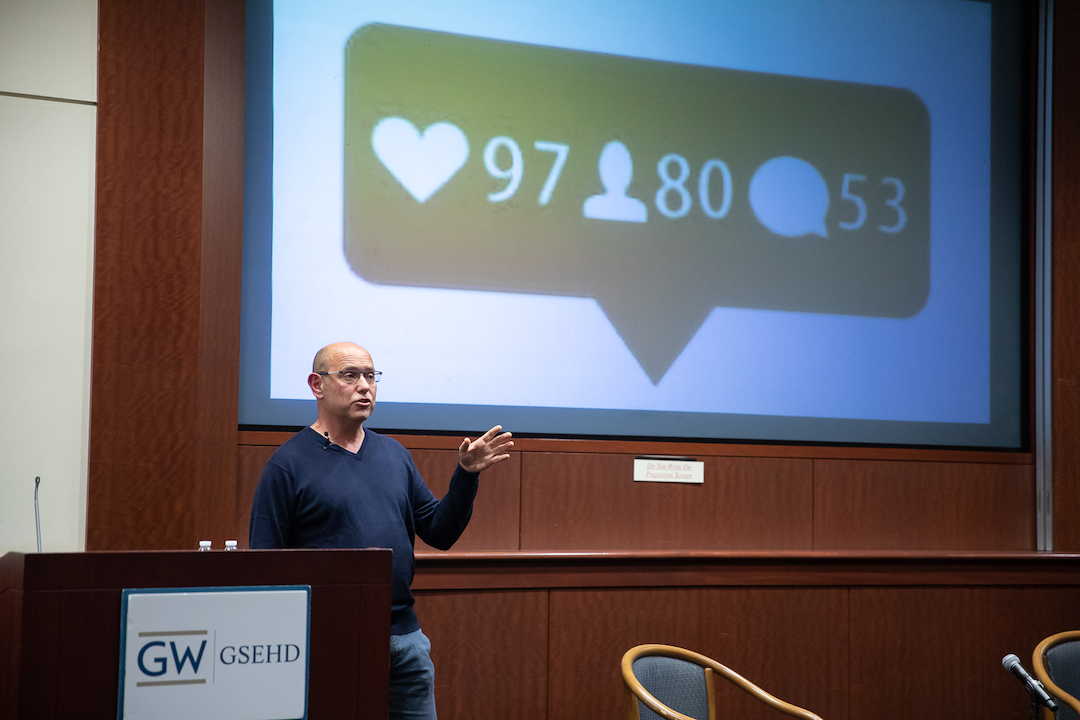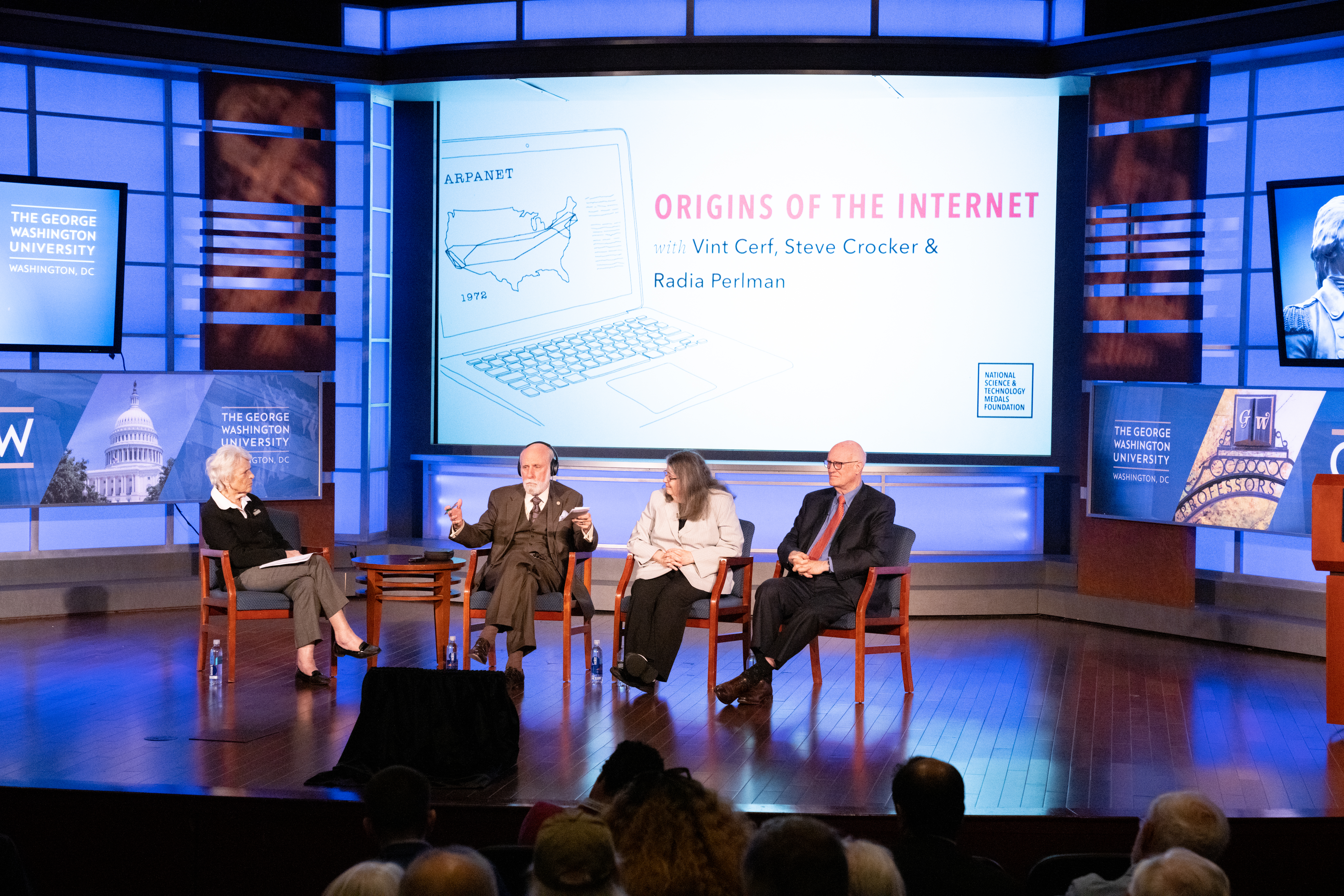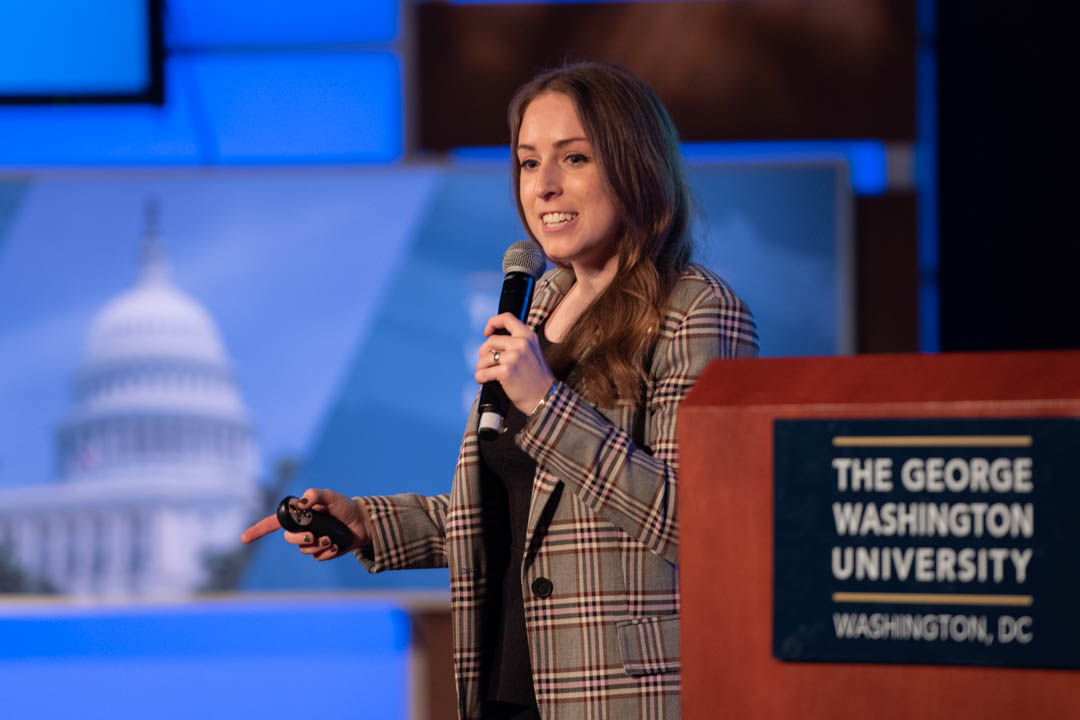By Tatyana Hopkins
The internet has not revolutionized the way people shape their identities, instead the digital age has only shifted the existing and understood building blocks on which people develop their sense of self and belonging, according to a cognitive psychologist and visiting associate professor at the George Washington University’s Graduate School of Education and Human Development.
For over a decade, the psychologist, Eli Gottlieb, directed the Mandel Leadership Institute in Jerusalem, where he examined links between cognition, culture and identity, and their implications for education and leadership.
Dr. Gottlieb said a return to the basic elements of identify formation would help educators understand the effects of technology, especially social media, on the way young people shape their inward and outward behaviors. He said this is especially important in a time when discussions about whether social media makes young people self-obsessed, conformist or fragile predominate news media and social discourse.
“Rather than jump onto the bandwagon of moral panic, we should be doing what schools of education are supposed to have been doing all this time, which is identifying deep, profound cultural values to pass on to the next generation,” he said.
Dr. Gottlieb, who joined the university through a fellowship with the Israel Institute, spoke Wednesday at the Marvin Center about how young people form their identities—their sense of who they are as individuals as well as members of communities—in the digital age as part of GSEHD’s “Conversations that Matter,” Dean Michael Feuer’s distinguished guest speaker series.
The lecture was also the culmination of a course Dr. Gottlieb taught at GW, which explored the similarities and differences of identify formation in the digital age for young people in Israel and the United States.
Dr. Gottlieb said the most influential theories on identity formation in history rely on three fundamental dimensions, with each theory giving a slightly different account of an ideal balance among these dimensions.
He identified the dimensions as: continuity, what makes people the same in the past, present and future; authenticity, the gap between how people feel and how they are perceived by the outside world; and individuality, the pull between being a unique being and the member of a group.
“I would like to argue that if we go back to those dimensions that already existed, [social media] has just shifted them around in dramatic ways,” Dr. Gottlieb said.
Social media’s nature of constant social engagement, looming threats that something one posts on the internet can be retrieved at any time and choosing the right photos to share at the right time for optimal “likes” are simply a contemporary shift on those traditional tensions, he said. And society must understand these changes, he said, to keep young people safe.
“Murder is down, teen pregnancy is down, car accidents are down, drinking is down, drugs are down,” Dr. Gottlieb said. “[But] suicide among teens is growing. This is probably the safest generation of teens we have seen in in years but they more at risk of killing themselves than any generation that’s preceded them.”
However, he said current research in the area only offers broad generalizations about social behaviors of young people in the digital age.
He used available research to give the digital age four characteristics—always being between communities, always on, lonely and disconnected—but said more experimental and cross-cultural research was needed to show social media’s actual causal effect on teen social behavior.
In his review of existing correlational research, he found that teens are spending less time in-person time with their friends and up to nine hours a day on average with electronic devices. The number of young people participating in civic associations, identifying with religions and being politically active are also declining. He said while these figures have been declining since the ’90s, they have gone into “freefall” in recent years.
Other studies also found emerging rates of political polarization online as well as heightened stress among young people to be likable on social media while also liking their friend’s posts.
However, he called for more experimental research undertakings in the cause-and-effect of social media on young people’s social attitudes and activities so that educators could appropriately respond.
“You cannot put the genie back in the bottle,” he said. “Our issues have less to do with limiting our use of the internet and legislating against internet use and much more about what it is that we are replacing when we spend all those hours online.”




